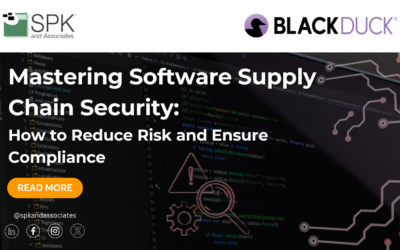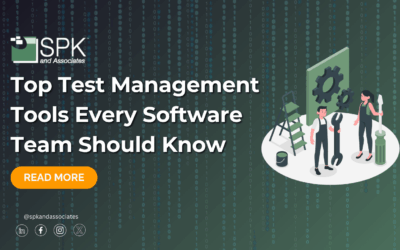Transcript
Benjamin: Hi, my name is Benjamin Hunting, and I’m speaking today with Rajiv Mistry, who is the Chief Strategy Officer for SPK and Associates. And today, we’re talking about the Internet of Things and specifically, the fantastic growth that the Internet of Things seems poised to encompass over the next few years. So Rajiv, if you could touch on for us just how fast you feel the Internet of Things is going to be growing over the next few years.
Rajiv: So the Internet of Things has been getting a lot of attention in the last few years, and a lot of big companies have focused their resources and finances on developing systems that are delivering Internet of Things capabilities. In the last year or so, all of a sudden it has garnered a lot of attention because big players like Microsoft, Amazon Web Services, and several other names, including Cisco, Ericsson, have been pushing forward into the Internet of Things. Currently, there are about 400 platform vendors who are claiming that they have something that is a complete system for delivering IoT capabilities. The studies are indicating anywhere between 15 billion to 100 billion devices being deployed by 2020. If you look at the amount of finances flowing into the enablement of Internet of Things, given this device count, there are studies indicating about $6 trillion going into investment toward these systems.
Now, if you look at this split that is coming out in these studies, we are looking at roughly $3-4 trillion going into the split between hardware and software, and then another couple of trillion going into services enablement or infrastructures being provisioned, etc. When you look at the hardware side of things, if 40-45% of that capital is going to flow into hardware enablement, then obviously, we need to focus on the design aspects of it. And again, on the software side, similar amounts will flow into the enablement of IoT across verticals such as energy, manufacturing, healthcare. Medical devices is one of the primary focuses that we have at SPK, and that’s the reason we are very interested in keenly watching the evolution of IoT systems.
Benjamin: If you had to outline or summarize the major hurdles that you think are facing the segment as a whole, what would those be?
Rajiv: Well then, there are five hurdles that I’ll talk through, and there might be more. You know, I’ve actually requested readers of my blog about this topic to call me back and let me know if there are any hurdles that they think I’ve missed. To date, I haven’t heard of any major hurdles that I’ve missed, but the five that I’ll talk through are system-wide and across any industry. So you know, the IoT industry overall will have these hurdles as the 3-4 billion devices that are being projected to be deployed worldwide by 2020, take hold.
The first one is the difficulty in bridging the size gap between analog sensors and digital circuits that process the sensor data coming in, as well as the performance metrics of the device that is being deployed as an IoT device in the field. The second one is the network impact of billions of devices sending data streams about their performance and sensor data back to IoT platforms running in the cloud. The third is the device serviceability and the environment linkback. Because if you have 24 billion, 30 billion devices reaching various points across the globe in four to five years, what happens when some of these devices need servicing? How is the entire system of forced deployment, support, monitoring, and service being designed? And what’s the environment linkback of devices that are simply left behind? Is it junk that we’ll have to deal with, or is it something that we should think about? That’s something that I’m constantly cognizant of and thinking of solutions for.
The fourth issue is the total cost of ownership and the return on investment for an entire IoT system. Not just the device, not just the back-end platform deployment, not just the managed services, but all of the above. And I don’t think there are any studies that are able to point to the total cost of ownership or the return on investment as the rate of device deployment scales, and as the rate of data coming in starts to become larger. And then lastly, the fifth one that I think of is the issue of nonstandard devices attaching to nonstandardized platforms that result in device and cloud platforms running IoT capabilities not being able to exchange data seamlessly back and forth across platform vendors. So the evolution of standards and compliance to these standards by IoT device manufacturers and IoT platform providers is very essential for the entire device ecosystem and the platform ecosystem to rise and meet the challenge of being able to provide meaningful IoT solutions.
Benjamin: Rajiv, I wanna say thank you for taking the time to outline the challenges facing Internet of Things today, and I really look forward to diving in deeper on some of these subjects in future podcasts.
Rajiv: Thank you very much, Ben, and also one additional point I want to make as we close. SPK is in the process of designing IoT solutions for medical devices, and we’re calling it the Intelligent Medical Device Solution Set. We have sent out a survey, and we’ll be posting a link, as part of this podcast, for viewers to respond back to. We are simply trying to gather evidence on what area should we focus our solutions on in terms of the various aspects of the complete IoT system architecture. So we’d appreciate answers back. Thank you very much.
Benjamin: Thank you.
Announcer: You were listing to the SPK and Associates Podcast.







